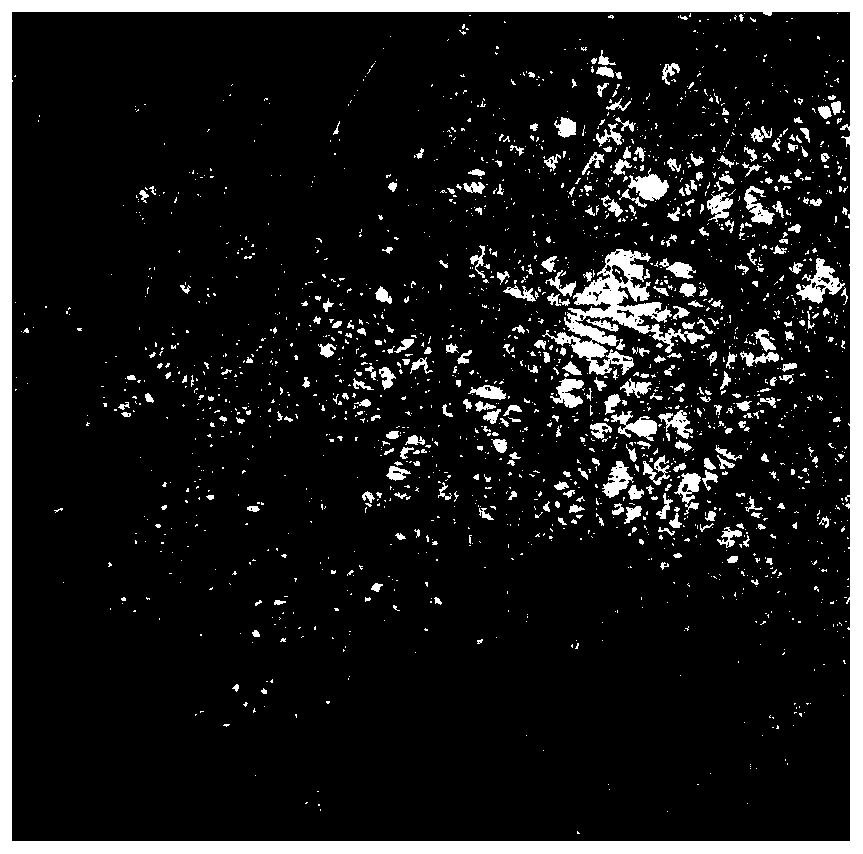Screen window or curtain capable of removing formaldehyde and volatile organic compounds (VOCs) and preparation method thereof
A technology for curtains and screens, applied in the field of screens or curtains and their preparation, can solve the problems of repeated cleaning and reuse of screens or screens, reduce the use effect of photocatalyst curtains or screens, expensive precious metal catalysts, etc., to achieve electron transfer High efficiency, good catalytic effect and stable structure
- Summary
- Abstract
- Description
- Claims
- Application Information
AI Technical Summary
Problems solved by technology
Method used
Image
Examples
Embodiment 1
[0047] (1) Weigh 2.5kg of potassium permanganate, 2.0kg of ferric chloride, 1.0kg of cobalt chloride, 0.5kg of ammonium oxalate, 4.0kg of sodium oxalate, and 100L of distilled water in a reaction kettle, and mix well. The hydrothermal reaction was carried out at 120° C. for 12 h, and naturally cooled to room temperature after the reaction was completed. Soak and stir the above materials with pure water for 10 minutes. After the materials slowly settle, pour off the water in the upper layer, and repeat the operation 3 times until the water after washing has no color. Put the cleaned material into an oven for drying at 70° C. to obtain a dry solid catalyst.
[0048] (2) Weigh 2.5kg of potassium permanganate, 1.5kg of ferric chloride, 1.5kg of cobalt chloride, 4.0kg of sodium oxalate, and 100L of distilled water in a reaction kettle, and mix well. Under the condition of 85° C., the hydrothermal reaction is carried out for 10 hours, and the nylon mesh is placed in the reaction so...
Embodiment 2
[0053] (1) Weigh 3.0kg of potassium permanganate, 1.0kg of ferric chloride, 2.0kg of cobalt chloride, 4.0kg of potassium oxalate, and 100L of distilled water in a reaction kettle, and mix well. The hydrothermal reaction was carried out at 110° C. for 12 h, and naturally cooled to room temperature after the reaction was completed. Soak and stir the above materials with pure water for 10 minutes. After the materials slowly settle, pour off the water in the upper layer, and repeat the operation 3 times until the water after washing has no color. Put the cleaned material into an oven for drying at 70° C. to obtain a dry solid catalyst.
[0054] (2) Weigh 2.5kg of sodium permanganate, 1.5kg of ferric chloride, 1.5kg of cobalt chloride, 4.0kg of ammonium oxalate, and 100L of distilled water in a reaction kettle, and mix well. Under the condition of 85°C, carry out the hydrothermal reaction for 10 hours, respectively put the large-pore (30 mesh), medium-pore (40-mesh) and small-pore...
Embodiment 3
[0059] (1) Weigh 3.5kg of sodium permanganate, 1.5kg of ferric chloride, 2.0kg of cobalt chloride, 3.5kg of potassium oxalate, and 100L of distilled water in a reaction kettle, and mix well. The hydrothermal reaction was carried out at 100° C. for 12 h, and naturally cooled to room temperature after the reaction was completed. Soak and stir the above materials with pure water for 10 minutes. After the materials slowly settle, pour off the water in the upper layer, and repeat the operation 3 times until the water after washing has no color. Put the cleaned material into an oven for drying at 70° C. to obtain a dry solid catalyst.
[0060] (2) Weigh 3.0kg of potassium permanganate, 1.0kg of ferric chloride, 1.5kg of cobalt chloride, 4.0kg of sodium oxalate, and 100L of distilled water in a reaction kettle, and mix well. Under the condition of 100 DEG C, the hydrothermal reaction is carried out for 10 hours, and the glass fiber mesh is placed in the reaction solution to continue...
PUM
 Login to View More
Login to View More Abstract
Description
Claims
Application Information
 Login to View More
Login to View More - R&D
- Intellectual Property
- Life Sciences
- Materials
- Tech Scout
- Unparalleled Data Quality
- Higher Quality Content
- 60% Fewer Hallucinations
Browse by: Latest US Patents, China's latest patents, Technical Efficacy Thesaurus, Application Domain, Technology Topic, Popular Technical Reports.
© 2025 PatSnap. All rights reserved.Legal|Privacy policy|Modern Slavery Act Transparency Statement|Sitemap|About US| Contact US: help@patsnap.com



